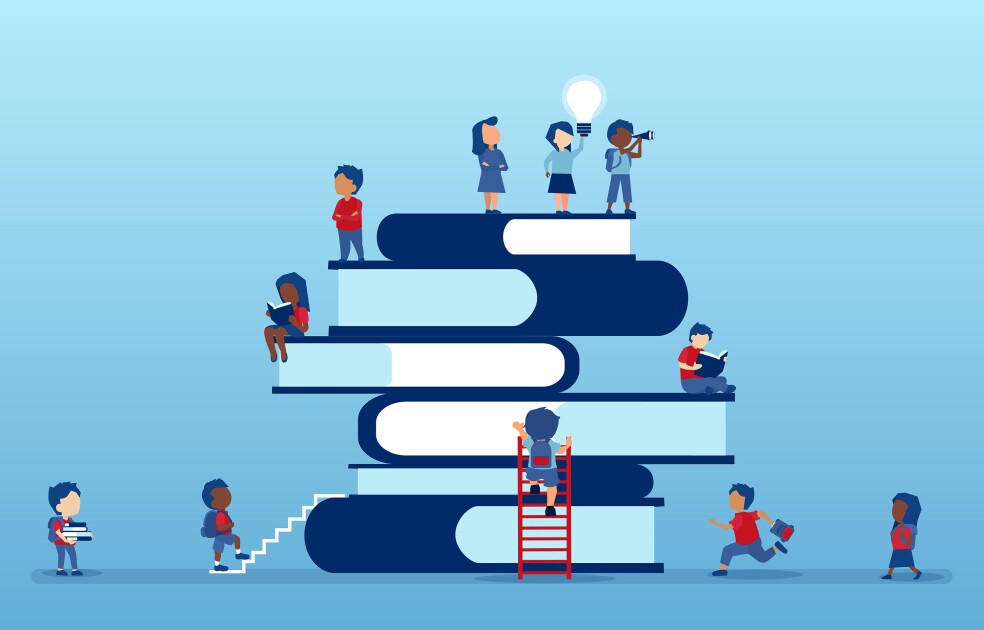
16 Jan What We Know About Multi-Tiered Systems of Supports (MTSS), in Charts
More districts and schools are using tiered systems of support, with an increased focus on building up students’ social-emotional skills.
That’s according to a survey by Panorama Education, an education technology company that provides tools to help school districts adopt and use multi-tiered system of supports, or MTSS.
MTSS is a framework implemented by thousands of districts across the country, with the goal of identifying and meeting every student’s unique instructional, social-emotional, and behavioral needs, according to Panorama. It is based on three tiers of support, each more personalized and intensive, with the understanding that not all students need the same amount of instruction and intervention.
At least 2,000 school districts use Panorama’s MTSS dashboard for data collection, but MTSS is widely used across the country, with almost every state offering some guidance to schools on implementing it.
National data on MTSS use in schools or districts remains scarce, and Panorama surveys are the only data spanning educator opinions on MTSS across multiple states.
In 2019, Panorama sent out a survey about MTSS implementation to its email subscribers—which includes any educator who signed up, not just ones who work with the company—gathering responses from about 400 educators.
(Panorama says the 400 respondents do not represent 400 districts. Panorama said it did not know how many states the respondents represented.)
The 2019 survey results showed that most districts were just getting started with their MTSS implementation, and were facing several challenges, such as finding resources and time, and using data to assess what students need.
Post-pandemic, Panorama sent out another survey—again to its email subscribers—in March 2023, and published results in May, this time with 600 respondents from at least 11 states. Respondents were not required to disclose their state or district, unless they chose to submit a write-in testimonial about their MTSS experiences, according to Panorama.
Teachers made up the biggest group of respondents in both surveys, followed by counselors, district administrators, principals and assistant principals, and superintendents and assistant superintendents.
In 2023, the survey results showed more districts have well-established MTSS frameworks than four years prior, and although they still have some of the same focus areas for why they use tiered interventions, such as literacy, there’s increased attention to social-emotional learning. More educators said their districts are using tiered systems of support for social-emotional learning or student behavior compared to the 2019 survey findings.
What kind of frameworks do districts use?
The Every Student Succeeds Act, signed into law in 2015, prioritizes the need for general tiered supports, although it does not specifically mention MTSS. There are several frameworks through which districts can offer tiered supports, such as Response to Intervention, or RTI, and Positive Behavioral Interventions and Supports, or PBIS.
RTI—which is what MTSS originated from—focuses on different tiers of academic interventions, while PBIS focuses on behavioral interventions. MTSS is a broader framework, and can be applied to both academics and behavior.
In 2019, 55 percent of districts or schools were using MTSS frameworks, according to educators who responded to Panorama. In 2023, respondents said it grew to 74 percent of districts and schools.
What do districts use MTSS for?
Of the 600 educators who responded to the 2023 survey, 71 percent said their school or district uses MTSS for literacy, or English/language arts. That’s slightly down from 2019, when 74 percent of the 400 or so educators said MTSS was used for literacy.
In 2019, social-emotional learning was a focus for about 40 percent of districts or schools, according to respondents. In 2023, 56 percent of respondents said MTSS was used for social-emotional learning.
“Coming out of the pandemic, there were so many students that were isolated. Anytime you have a large break, you have to help students reacclimate to the classroom and interact with one another,” said Rexanne Hill, a national education adviser for Panorama Education.
“So to me, it’s not surprising that [use of MTSS] for SEL has grown and increased.”
Across the country, districts most commonly implement the MTSS framework for meeting students’ social-emotional needs, Rebecca Zumeta Edmonds, managing researcher at the American Institutes of Research, said in a previous interview with EdWeek about her experience.
Benefits and challenges of using MTSS
In 2019, Panorama Education’s survey asked participants open-ended questions about the benefits and challenges of implementing MTSS. Those answers reflected what experts have told Education Week about the challenges and benefits of multi-tiered supports.
MTSS provides a framework for schools and districts to offer each student the level of support they need, and tailor instruction or social-emotional support to their needs, and make decisions based on evaluation data from each tier of support, according to four experts.
However, the process of offering three tiers of support and implementing data-driven interventions can be time- and labor-intensive, according to the same experts.
Making data-based decisions was the most popular benefit MTSS educators identified. When schools implement MTSS, educators evaluate student data on academic performance, behavior, attendance, and other metrics they choose. They then use that data to identify which tier of support students benefit from, and continue to collect data to make sure students are benefiting from interventions.
MTSS also allows schools and districts to improve learning opportunities, ensure no student falls through the cracks, and support the whole child, according to the educators responding to the survey.
However, MTSS can be challenging to implement, educators said. Challenges include getting faculty and staff to buy in, and allocating resources to MTSS.

